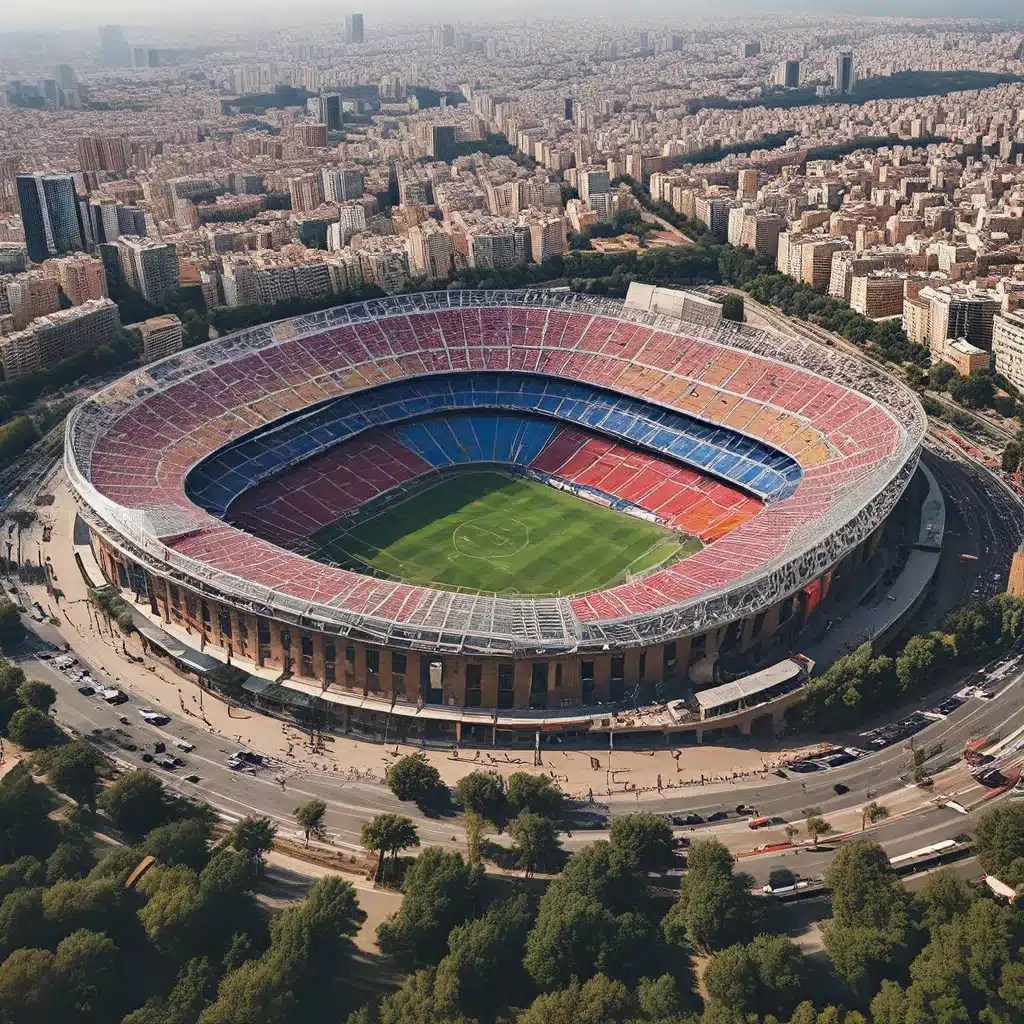
Camp Nou, the majestic home of FC Barcelona, is more than just a football stadium; it is a testament to the city’s passion, history, and architectural grandeur. This colossal arena, which can accommodate an astounding 99,354 fans, has cemented its place as one of the most iconic and renowned stadiums in the world.
A Beacon of Catalonian Pride
The construction of Camp Nou began in 1954 and was completed in 1957, serving as a symbol of Catalonian identity and the unwavering spirit of FC Barcelona. The stadium’s name, which translates to “new field” in Catalan, reflects the club’s ambition to create a space that would not only host their beloved team but also serve as a rallying point for the entire region.
Architectural Brilliance
The design of Camp Nou is a masterpiece in its own right, showcasing the architectural prowess that has come to define Barcelona. The stadium’s imposing facade features a striking combination of concrete, steel, and glass, creating a harmonious blend of functionality and aesthetic beauty. The stadium’s massive size, imposing grandstand, and intricate detailing have earned it widespread recognition as one of the most impressive sports venues in the world.
A Continuously Evolving Landmark
Over the years, Camp Nou has undergone various renovations and expansions to keep pace with the changing demands of modern football. In the late 1990s, the stadium underwent a significant transformation, with the addition of the towering north and south stands, significantly increasing its capacity and enhancing the overall spectator experience.
A Mecca for Football Fans
For football enthusiasts, a visit to Camp Nou is a must-do on any Barcelona itinerary. The stadium’s sheer size and the electric atmosphere it generates on match days are truly awe-inspiring. Fans can immerse themselves in the club’s rich history by exploring the on-site museum, which showcases trophies, memorabilia, and interactive exhibits that celebrate the achievements of legendary players like Lionel Messi, Ronaldinho, and Rivaldo.
Technological Advancements
In recent years, Camp Nou has undergone a series of technological upgrades to enhance the fan experience. The implementation of high-definition video screens, state-of-the-art sound systems, and improved connectivity have transformed the stadium into a cutting-edge, multifunctional venue that seamlessly blends tradition with innovation.
A Glimpse into the Future
As FC Barcelona looks towards the future, the club has announced plans to further modernize and expand Camp Nou. The proposed renovation, set to be completed by 2026, aims to increase the stadium’s capacity to 100,000, making it the largest football stadium in Europe. This ambitious project will also introduce new amenities, such as a retractable roof, to provide an even more comfortable and immersive experience for fans.
Conclusion
Camp Nou is more than just a football stadium; it is a Barcelona landmark, a symbol of Catalonian pride, and a testament to the city’s architectural prowess. Whether you’re a die-hard football fan or simply someone who appreciates the wonders of modern architecture, a visit to this iconic venue is sure to leave a lasting impression. As FC Barcelona continues to write the next chapter in its storied history, Camp Nou will undoubtedly remain at the heart of the city’s cultural and sporting identity.
For those seeking to explore the architectural marvels and rich history of Barcelona, be sure to visit Old Stadium Journey, a website dedicated to chronicling the stories and experiences of iconic stadiums from around the world.

